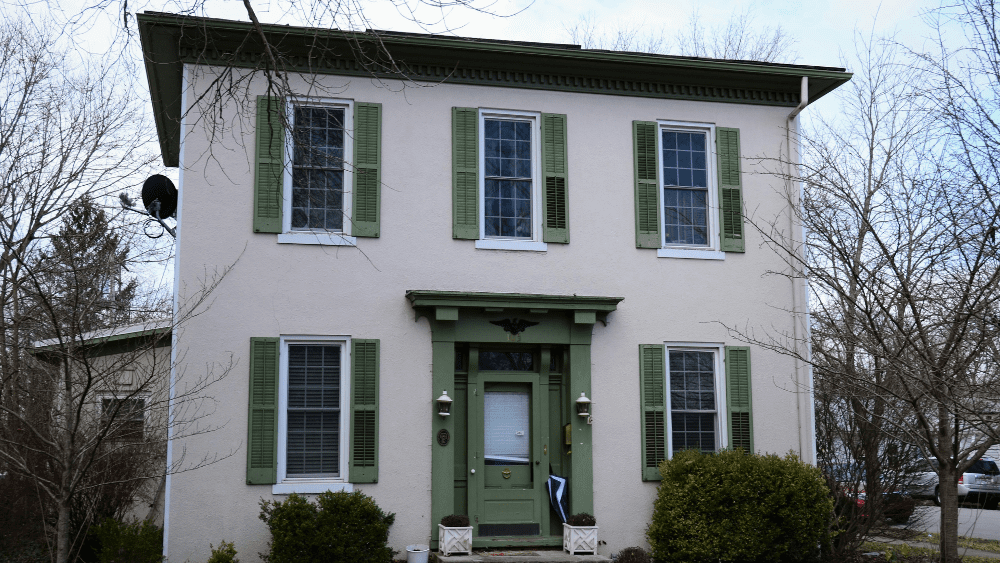Vic govt policy leaves Ballarat facing housing supply shortage.
Ballarat is poised to run out of land within four years as the regional city’s demand for new homes outpaces town planning.
The forecast from the Urban Development Institute of Australia’s Victorian branch comes with a dire warning for the city’s housing affordability as well as concerns around knock on effects to its population growth and economy.
Figures compiled by Ethos Urban for the UDIA have revealed Victoria’s third largest city is projected to develop and build homes on all of its available land by 2029 at current demand levels.
The analysis also shows Ballarat’s homebuyers are rejecting the state government’s plans to force more people to live in higher density housing in established areas, with an estimated 91 per cent of all new home approvals in the region for freestanding houses — and some 70 per cent in new housing estates.
RELATED: ABS data: New build costs surge ahead of rate cut
National Housing Accord 60,000 new homes short in first year
Ch9 blow: Portelli gives away all Block homes
New home construction in Ballarat has heavily favoured houses.
Planning Victoria has a stated goal of achieving 60 per cent of new homes being built in infill development sites across existing suburbs.
The state also has a plan to build 800,000 new homes in a decade as part of a bid to address housing affordability issues, which goes beyond a federal government policy to create 1.2 million new homes by 2029 for the same purpose.
With less than 7 per cent of Ballarat’s new housing market currently coming from units and townhouses, the UDIA has warned if the government holds onto the current infill policy they will risk a housing supply crisis in Ballarat.
UDIA Victorian chief executive Linda Allison warned the projections were just at current demand levels and a rise in demand expected as state and federal governments seek to boost the construction of new homes around the state could chew through the housing estates that have been gazetted so far even quicker than the forecast.
“Ballarat has been a bit subdued over the last couple of years, but the long range trend is strong and if demand picks up as interest rate cuts happen, you could see that supply being taken up even quicker,” Ms Allison said.
The infrastructure needed to establish housing supply takes a while to develop.
She added that with the reality that it took some time to connect rezoned land with roads and other infrastructure, the time to bring forward future precinct structure plans for the area was now.
“We think that Ballarat has a really strong role to play in solving the housing supply shortage, but we have just got to get the settings right,” Ms Allison said.
“This report is a wake-up call Without immediate planning for future growth areas, Ballarat risks a housing shortfall that could drive up prices, slow population growth, and undermine economic competitiveness.”
Labelling the current targets for Ballarat as “ambitious”, she said they also “miss the point of why people move to regional Victoria”.
“Most people move to cities such as Ballarat to have a home and space,” Ms Allison said.
“In time, we may see more demand for higher density in regions, but it is some way off. If we don’t act now to unlock more land, we risk pricing people out of the region.”
Urban Development Institute of Australia Victorian president Tom Trevaskis said price rises would be inevitable if the supply of land wasn’t increased.
UDIA Victorian President Tom Trevaskis said with buyer attitudes seemingly unchanged so far, refusing to provide more land to develop into houses would simply create a shortage that would lead to surging demand and price rises.
While the city has a proposed supply that would carry it through for the next 15 years, the UDIA also believe that will come up short.
Mr Trevaskis said land equivalent to another 6000-7000 lots needed to be rezoned “immediately” in order to keep up with the demand and put the city back on track towards having the 15-year supply most councils aim for.
“With all that is approved and due to be approved, there’s still a short fall,” he said.
The report comes as the UDIA launches a new Ballarat chapter to join other regional ones already operating in Bendigo and Geelong.
The Victorian government is aiming to wipe about a year off the 3-4 year timeline needed to complete a precinct structure plan today, and is preparing a Ballarat Infrastructure and Growth Alignment Framework to ensure there is sufficient land.
A government spokesperson said there had been progress made to develop more precinct structure plans around Victoria over the past year.
“We understand the need to improve speed and certainty – that’s why as part of this plan we’re working to reduce delivery timeframes for PSPs by a third,” they said.
“Work is already underway to unlock more than 5,600 homes and 600 jobs through the Ballarat North Precinct Structure Plan, with community consultation the next stage to shape the new community.”
City of Ballarat director of development and growth Natalie Robertson said they strongly refuted the suggestion of an inadequate supply of land.
Ms Robertson noted their Housing Strategy 2041 clearly outlined existing zoned greenfield land supply of approximately 16,200 lots, which equates to a medium-term greenfield supply of approximately 21 years.
She added that further strategic work is progressing on the development of Structure Plans within urban renewal areas including Wendouree Station, La Trobe Street Saleyards and the Ballarat CBD.
The combination, she said, puts them in a very strong position to meet State Government targets long term.
Sign up to the Herald Sun Weekly Real Estate Update. Click here to get the latest Victorian property market news delivered direct to your inbox.
MORE: Harsh truth about Block’s hit ratings exposed
Melb couple’s Fitzroy brothel reno scores multimillion-dollar sale



















 English (US) ·
English (US) ·